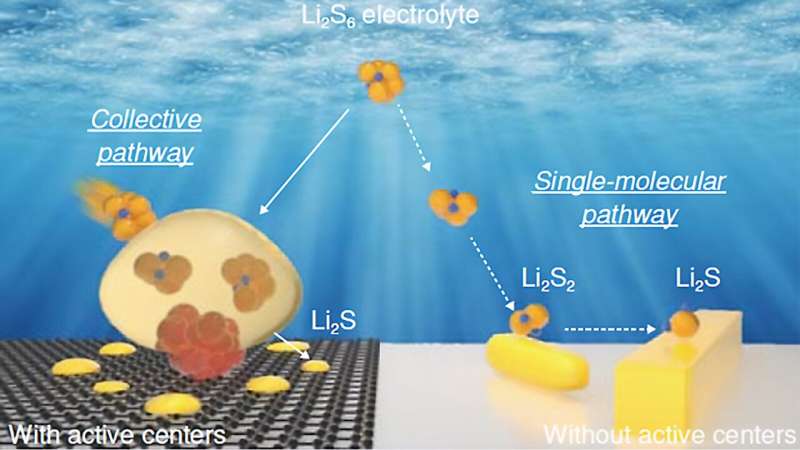Human beings are known for a myriad of different things, but most importantly, they are known for their willingness to get better under all circumstances. This hard-set commitment towards growth has brought the world some …
Human beings are known for a myriad of different things, but most importantly, they are known for their willingness to get better under all circumstances. This hard-set commitment towards growth has brought the world some huge milestones, with technology emerging as quite a major member of the group. The reason why we hold technology in such a high regard is, by and large, based on its skill-set, which guided us towards a reality that nobody could have ever imagined otherwise. Nevertheless, if we look beyond the surface for one hot second, it will become abundantly clear how the whole runner was also very much inspired from the way we applied those skills across a real world environment. The latter component, in fact, did a lot to give the creation a spectrum-wide presence, and as a result, initiated a full-blown tech revolution. Of course, this revolution eventually went on to scale up the human experience through some outright unique avenues, but even after achieving a feat so notable, technology will somehow continue to bring forth the right goods. The same has turned more and more evident in recent times, and assuming one new discovery ends up with the desired impact, it will only put that trend on a higher pedestal moving forward.
The researching team at US Department of Energy’s Argonne National Laboratory has successfully discovered an unknown mechanism, which can address a major issue plaguing the prospects of lithium-sulfur batteries. Before we dig into this new development, though, we must try and understand the reasons that orchestrated these batteries’ emergence in the first place. Lithium-sulfur batteries, in short, hold three significant advantages over current and more prevalent lithium-ion batteries. For starters, they can store two to three times more energy in a given volume, translating to longer vehicle ranges. Next up, they come bearing a dramatically lower cost, considering the well-stocked sulfur reserves make the whole value proposition quite affordable. The third and final advantage talks to its independence from any critical resources like cobalt and nickel, which are likely to face severe shortages in the upcoming years. So, with such a strong upside, why aren’t lithium-sulfur batteries enjoying a wider application? Well, as promising as it sounds, getting the technology to achieve an optimal financial ability has proven to be a massive challenge. You see, when scaled up to commercial size, the battery cells’ performance would rapidly decline following repeated charge and discharge. The cause of this decline talks to the dissolution of sulfur from the cathode during discharge, leading to the formation of soluble lithium polysulfides. Once formed, these polysulfides flow into the lithium metal negative electrode (anode) during charging and directly impact the technology’s performance from there onwards. If that wasn’t bad enough, the loss of sulfur from the cathode and alterations in the anode composition further ensure a substandard display on the battery’s part during cycling. Argonne National Laboratory’s latest brainchild, however, chalks a way through on the back of a catalytic material that can eliminate the sulfur loss problem when added in a small amount to the sulfur cathode.
“The presence of a small amount of catalyst in the cathode makes all the difference. A much different reaction pathway follows, one free of intermediate reaction steps,” said Gui-Liang Xu, chemist in Argonne’s Chemical Sciences and Engineering division.
The centerpiece driving this whole mechanism is rooted in the formation of dense nanoscale bubbles of lithium polysulfides on the cathode surface, which do not appear without the all-new catalyst. Making the component so critical is the fact that these lithium polysulfides rapidly spread throughout the cathode structure during discharge and transform to lithium sulfide consisting of nanoscale crystallites. By doing so, they basically prevent the sulfur loss and performance decline in commercial-size cells.
To realize the breakthrough, the researchers took help from cutting-edge characterization techniques. The result was, as revealed during the analysis of catalyst’s structure with the intense synchrotron X-ray beams at beamline 20-BM of the Advanced Photon Source, a DOE Office of Science user facility, a material that could affect the shape and composition of the final product upon discharge, as well as of intermediate products. Beyond that, the team also deployed a separate methodology to visualize the electrode-electrolyte interface at the nanoscale while a test cell was working. This particular technique facilitated a connection between changes at the nanoscale and the behavior of an operating cell.
“Based on our exciting discovery, we will be doing more research to design even better sulfur cathodes,” Xu noted. “It would also be worthwhile to explore whether this mechanism applies to other next-generation batteries, such as sodium-sulfur. “Our team’s efforts could bring the U.S. one large step closer to a greener and more sustainable transportation landscape.”




